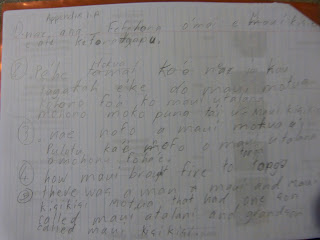Framework
The ERICA model had provided me with a series of strategies to choose from in order to help the learners learn language effectively. These strategies started off from Preparing to Learn, Thinking Through, Extracting and Organising Information and Putting It All Together. Under each stage, teachers create activities that suit different levels of students. Teachers have to modify the activities to accommodate their learners’ abilities. Each activity is carefully created with the intention that students would be engaged in worthwhile experiences. The lesson has a learning intention and at the end of each lesson it can be measured whether it has been achieved or not.
This model motivated me to look carefully at my activities to make sure that students will be engaged and learning takes place at the same time. Not only that, I have to make sure that information is thoroughly structured and students understand what is expected of them. Opportunities are given to explore the contents and meaning through the activities being designed. ERICA model has added onto the existing pile of strategies that I have learnt to assist me as a teacher in encouraging my students to take greater responsibility for their own learning.





















